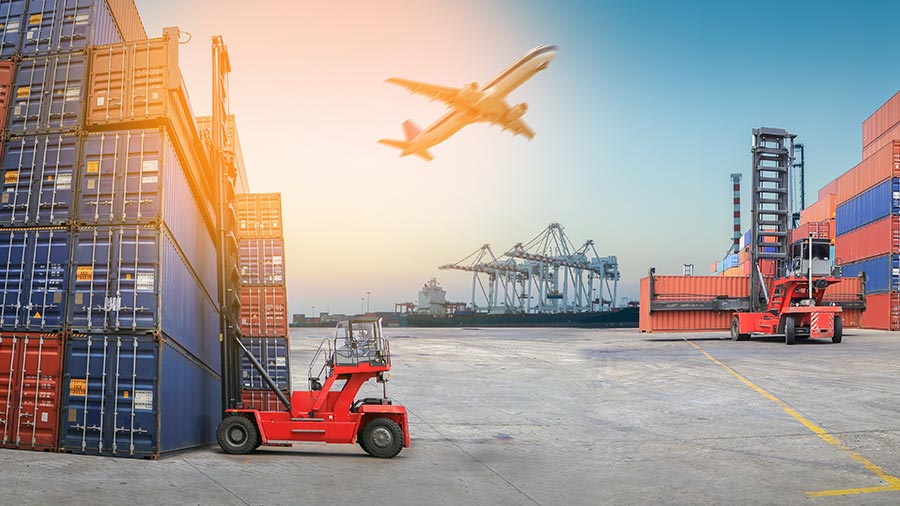
In today's globalized economy, supply chains are more complex and interconnected than ever before. Efficient logistics is the backbone of successful businesses, ensuring products reach consumers on time and in perfect condition. Freight forwarding plays a pivotal role in this ecosystem, acting as the orchestrator that manages the movement of goods across borders and continents.
End-to-end freight forwarding refers to a comprehensive approach that manages every aspect of the shipping process—from initial order placement to final delivery—delivering seamless, transparent, and efficient supply chain solutions. B&B Foods explores how end-to-end freight forwarding simplifies supply chain management, the benefits it offers, and key strategies for implementation.
1. Understanding Freight Forwarding
What Is Freight Forwarding?
Freight forwarding is a service that involves organizing shipments for individuals or corporations to get goods from the manufacturer or producer to a market, customer, or final point of distribution. Freight forwarders act as intermediaries, coordinating logistics, documentation, customs clearance, and transportation modes.
Traditional vs. End-to-End Freight Forwarding
- Traditional Freight Forwarding: Often fragmented, with different providers managing various segments of the journey. This can lead to miscommunication, delays, and increased costs.
- End-to-End Freight Forwarding: Provides a unified solution that manages the entire supply chain process, ensuring better coordination, visibility, and efficiency.
2. The Components of End-to-End Freight Forwarding
a. Procurement and Order Management
The process begins with order confirmation and procurement planning. Accurate demand forecasting and order processing set the stage for smooth logistics.
b. Documentation and Compliance
Handling necessary documents such as Bills of Lading, commercial invoices, certificates of origin, and customs declarations is critical. Proper documentation ensures compliance and prevents delays.
c. Transportation Coordination
Selecting appropriate modes—air, sea, road, or rail—and carriers based on cost, speed, and nature of goods.
d. Warehousing and Distribution
Consolidating shipments, warehousing, and inventory management are integral to optimizing storage and distribution.
e. Customs Clearance
Navigating international customs regulations accurately to prevent hold-ups and penalties.
f. Last-Mile Delivery
Ensuring timely delivery to the final destination, often the most complex part of the supply chain.
g. Tracking and Visibility
Real-time tracking systems provide transparency at every stage, enabling proactive management of potential issues.
3. Benefits of End-to-End Freight Forwarding
a. Improved Supply Chain Visibility
freight forwarding services Unified platforms offer real-time insights, enabling better planning and response.
b. Cost Efficiency
Consolidated shipments, optimized routes, and reduced administrative overhead lower overall costs.
c. Enhanced Flexibility and Scalability
Easily adapt to changes in demand or disruptions with integrated solutions.
d. Reduced Risks and Errors
Streamlined documentation and compliance processes minimize delays, penalties, and damages.
e. Better Customer Service
Reliable delivery schedules and transparency enhance customer satisfaction.
f. Sustainability and Compliance
Adherence to environmental regulations and sustainable practices is simplified with integrated management.
4. Technologies Driving End-to-End Freight Forwarding
a. Transportation Management Systems (TMS)
Centralized platforms that plan, execute, and optimize shipments.
b. Supply Chain Management (SCM) Software
Tools that coordinate procurement, production, and distribution.
c. Internet of Things (IoT) and Sensors
Real-time tracking of shipments, condition monitoring, and predictive maintenance.
d. Blockchain
Enhanced transparency, security, and traceability of transactions and documents.
e. Artificial Intelligence (AI) and Data Analytics
Forecasting, route optimization, and risk assessment.
5. Challenges in Implementing End-to-End Freight Forwarding
- Integration of disparate systems and data sources
- Ensuring data security and privacy
- Managing multiple stakeholders and compliance across jurisdictions
- Handling unforeseen disruptions such as geopolitical issues or natural disasters
6. Strategies for Successful Implementation
a. Invest in Technology
Adopt integrated platforms that facilitate seamless data sharing and automation.
b. Collaborate with Reliable Partners
Choose carriers, customs brokers, and logistics providers committed to transparency and excellence.
c. Focus on Data Management
Maintain accurate, real-time data for better decision-making.
d. Continuous Improvement
Regularly review and optimize processes based on analytics and feedback.
7. Case Studies
a. Global Electronics Manufacturer
How end-to-end freight forwarding reduced lead times by 20% and cut costs by 15%.
b. Fashion Retail Chain
Streamlined customs compliance and improved delivery reliability during peak seasons.
8. The Future of Freight Forwarding
- Increased adoption of automation and AI
- Greater emphasis on sustainability
- Use of autonomous vehicles and drones
- Enhanced digital platforms for end-to-end visibility
Conclusion
B&B Foods End-to-end freight forwarding is transforming supply chain management by providing a holistic, integrated approach that simplifies complex logistics operations. Businesses that leverage these comprehensive solutions can enjoy improved visibility, reduced costs, enhanced flexibility, and superior customer service—ultimately gaining a competitive edge in the global marketplace.
Embracing technology, fostering collaboration, and continuously optimizing processes are key to unlocking the full potential of end-to-end freight forwarding. As supply chains evolve, those who adopt these best practices will be better positioned to navigate uncertainties and capitalize on new opportunities.
Let's Connected
Name: B&B Foods
Address: 17007 Prime Blvd, Lockport, IL 60441, United States
Phone: (815) 834-2621
Map: https://maps.app.goo.gl/UNP8pYkJuWjqvVak7